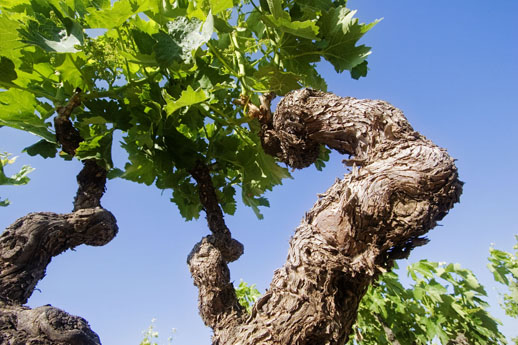Lopez de Heredia Vina Gravonia–A Unique Oyster Wine
Dec 16, 2010

Ask any sommelier to recommend a wine with your oysters and he’s probably going to give you a fruity West Coast Sauvignon Blanc or a steely Sancerre or Muscadet. The conventional wisdom says that an oyster wine should have a knife-edged acidity to cut through the lingering sea mist of the oyster. And the conventional wisdom says that stainless steel fermentation tanks are essential, to capture the fresh fruitiness; stay away from oak.
As is so often the case (almost always, I’m starting to think), the conventional wisdom is wrong. Sharp wines often simply taste sour and a little off after an oyster (or caviar, for that matter). More and more, I think that the key to a great oyster wine is body. You need a white wine with enough heft that it won’t get pushed around by the intense salt and savor of the oyster.
This does not mean that your typical big Chardonnay will work. Yes, it has body, but the Nilla Wafer flavor in most modern wines is disastrous with almost any foodstuff (except, possibly, Nilla Wafers). Young oak barrels are responsible for that flavor. So, yes, oak can be a problem.
BUT. Let the wine sit in oak barrels for, say, a few years instead of a few months, and something magical happens. The vanilla cookie scent recedes, replaced with much more intriguing and grown-up aromas. This is how it’s done at Spain’s R. Lopez de Heredia, the most prestigious winery in Rioja, and they are alone in still doing it this way. It’s good for the wines, but it really sucks for the cash flow, which is why the rest of the wine world has adopted the mantra of “Sell it young and fruity,” and has even managed to convince most wine drinkers that wine tastes better this way. What a marketing coup!
Lopez de Heredia breaks all the rules. Not just the long aging, but the vines themselves. While the rest of the world switched over to dwarf vines on low trellises, to improve yield, Lopez stuck with their ancient, tree-like vines.

This used to make them hopelessly old-fashioned—rather than breaking any new rules, they were simply hewing to the rules they had followed since the founding of the company in Rioja 133 years ago—but lately it is starting to make them look like free-thinking rebels. It turns out that high yield dilutes flavor and character, and that old vines with deep roots produce more interesting, minerally wine.
More important, After years in oak barrels, Lopez’s white wines develop walnut and honey notes, along with a touch of the fino sherry flavor known as “rancio.” Bone dry yet rich, they are unlike any other white wines in the world. The 2000 Vina Gravonia, their youngest release, makes a hell of an oyster wine. If you can imagine a bone-dry Ricola cough drop, that’s the flavor profile: herbal and honeyed. I drank a bottle with a batch of Totten Inlet Virginicas, and the wine’s stony resolve stood up beautifully to the briny, slight durian flavor of the Tottens. Try it for yourself, and discover how wonderfully diverse the world of oyster wines can be.
« PREVIOUS: Three Little Hogs
 Recent Posts
Recent Posts

11 Responses to Lopez de Heredia Vina Gravonia–A Unique Oyster Wine